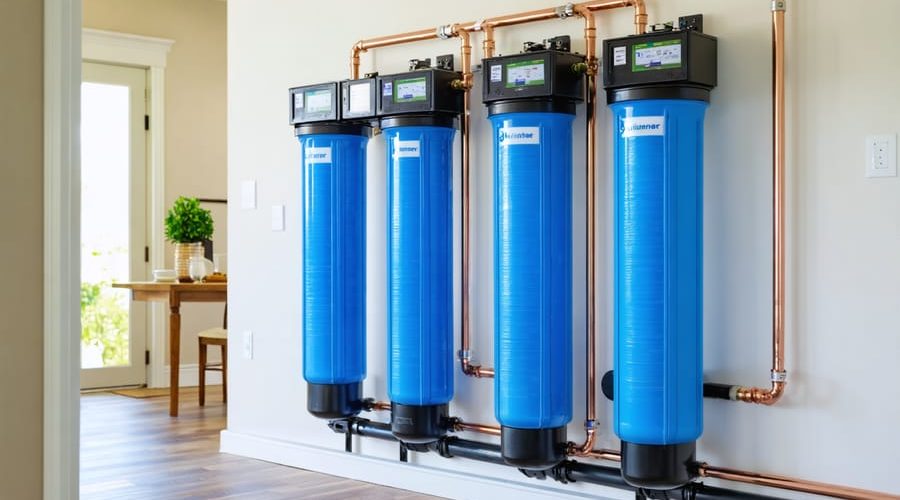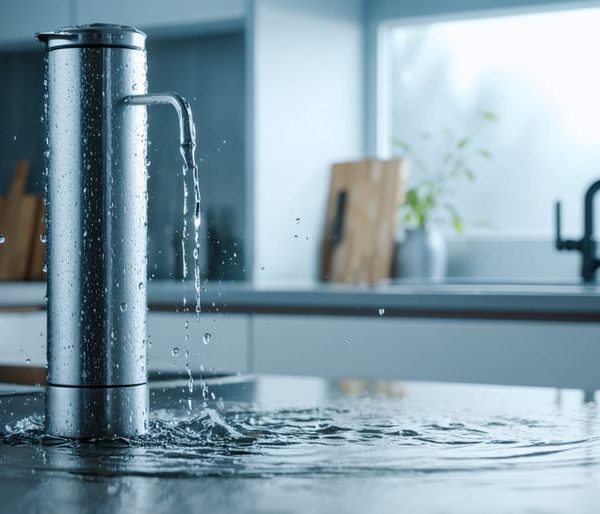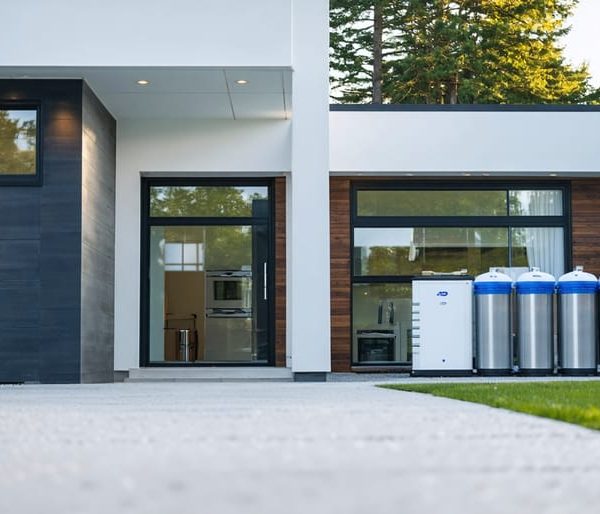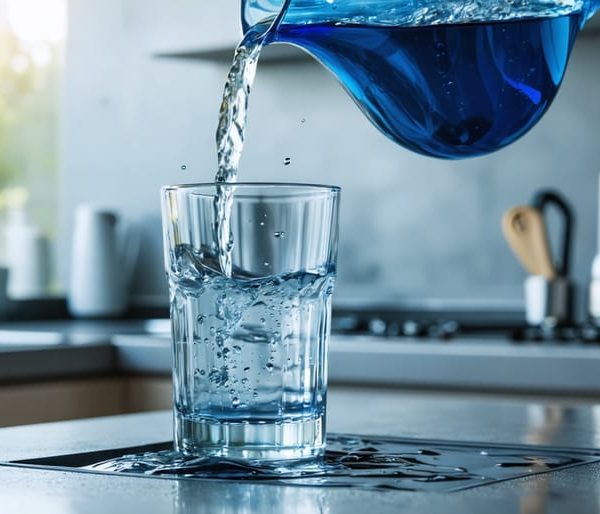Transform your home’s water quality with a comprehensive whole-house filtration system that protects every tap, shower, and appliance from harmful contaminants. The best whole house water filter systems act as a powerful first line of defense, removing sediment, chlorine, heavy metals, and harmful chemicals before they enter your living space.
Unlike basic faucet filters or pitcher solutions, whole-house systems deliver clean, filtered water throughout your entire home, ensuring consistent quality whether you’re washing vegetables, taking a shower, or running the dishwasher. This integrated approach not only safeguards your family’s health but also extends the lifespan of your plumbing fixtures and appliances by preventing scale buildup and corrosion.
Modern whole-house filtration technology combines multiple stages of filtration, from sediment pre-filters to activated carbon and advanced mineral filtration, creating a comprehensive solution that addresses both visible and invisible water quality issues. By investing in whole-house filtration, homeowners gain peace of mind knowing their water is consistently pure and safe, while potentially increasing their property’s value and reducing long-term maintenance costs.
How Whole House Water Filtration Systems Work
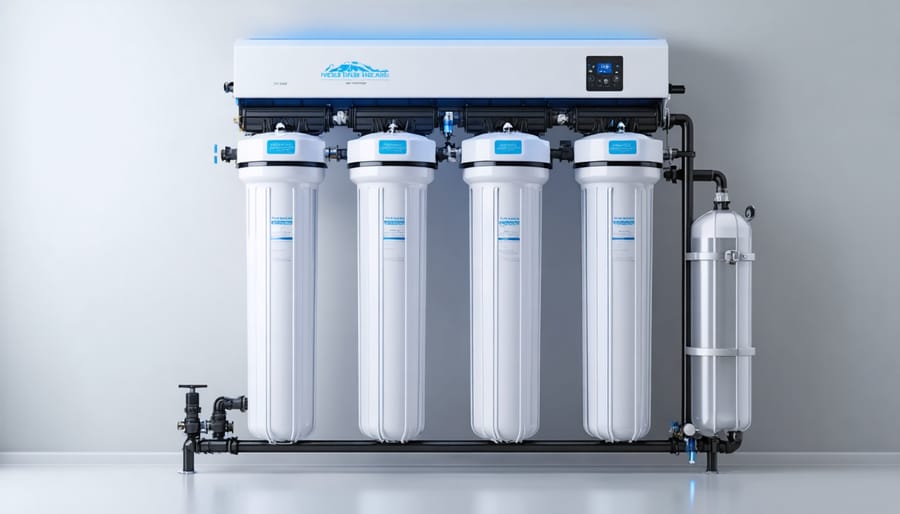
Key Components
A whole house water filtration system consists of three vital components that work together to deliver clean water throughout your home. The pre-filter serves as the first line of defense, removing larger particles like sediment, rust, and debris. This stage protects and extends the life of subsequent filters while preventing these particles from clogging your pipes.
The main filtration unit is the heart of the system, typically featuring activated carbon filters and other specialized media. This core component removes chlorine, volatile organic compounds (VOCs), and various contaminants that affect water taste and quality. Some advanced systems include multiple stages of filtration media to target specific contaminants common in your area.
The post-filter acts as the final purification stage, catching any remaining fine particles and ensuring optimal water quality. Many systems also incorporate UV sterilization at this stage to eliminate harmful bacteria and microorganisms. Additionally, some setups include a water softener component to address hard water issues, though this is optional depending on your local water conditions.
Regular maintenance of these components, particularly filter replacements, is essential for optimal performance and longevity of your whole house filtration system.
Installation Points and Requirements
Whole house water filtration systems are typically installed at your home’s main water line, where water first enters the building from the municipal supply or well. The ideal location is after the water meter but before the water heater, ensuring all water entering your home gets filtered. This placement allows for comprehensive protection of your plumbing system and appliances.
Basic installation requirements include adequate space (usually 4-5 feet of clearance), proper plumbing connections, and a drainage system for backwashing. You’ll need a bypass valve to redirect water flow during maintenance, and some systems require electrical outlets for automated features. Most installations work best in basements, garages, or utility rooms where temperatures remain above freezing.
Professional installation is recommended unless you have advanced plumbing experience. Your home should have adequate water pressure (typically 40-80 PSI) and flow rate to support the system. Local building codes may also require specific permits or compliance measures, so it’s essential to check your area’s regulations before installation.
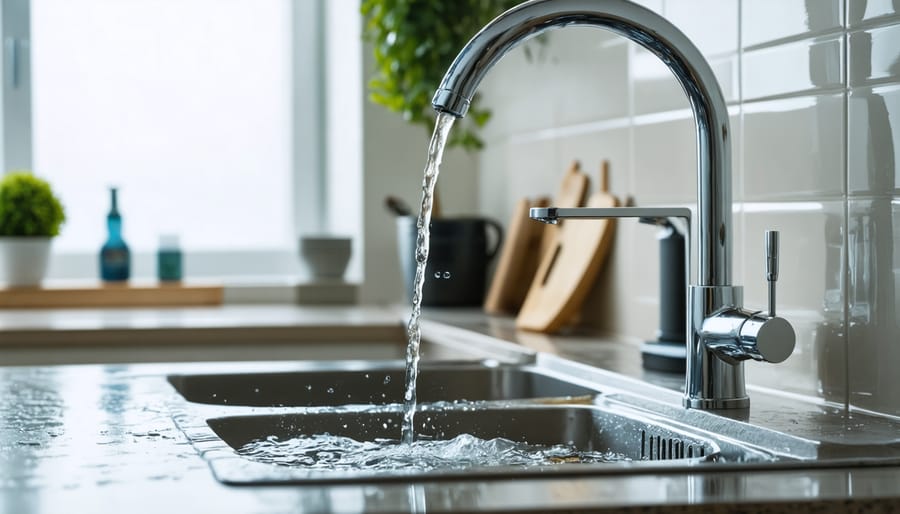
Essential Features of Quality Whole House Filters
Filtration Capacity
A good whole house water filtration system should match your household’s daily water consumption and flow rate requirements. Most residential systems are designed to handle flow rates between 10 and 15 gallons per minute (GPM), which is sufficient for average households of 2-4 people. For larger families or homes with multiple bathrooms, consider systems rated for 15-20 GPM to prevent pressure drops during peak usage times.
The filtration capacity also depends on your water usage patterns. A typical American household uses 300-400 gallons of water daily, so your system should be able to effectively filter this volume without compromising performance. Look for systems with filter cartridges rated for at least 100,000 gallons or 6-12 months of use before replacement is needed.
Remember that oversizing isn’t always better – a system too large for your needs can lead to inefficient filtration and unnecessary maintenance costs, while an undersized system may struggle to keep up with demand and reduce water pressure. Consider factors like the number of bathrooms, appliances, and peak usage times when selecting your system’s capacity.
Filter Life and Maintenance
Regular maintenance is crucial for keeping your whole house water filtration system operating at peak efficiency. The filter life expectancy varies depending on water quality, usage, and filter type, but most pre-filters need replacement every 3-6 months, while main carbon filters typically last 1-3 years.
To maintain optimal performance, regularly check pressure gauges and water quality indicators. A significant drop in water pressure often signals it’s time for filter replacement. Keep a maintenance log to track filter changes and system inspections, which should occur at least twice yearly.
Some systems feature automated monitoring systems that alert you when filters need changing, while others require manual checking. Sediment pre-filters typically need more frequent attention, as they catch larger particles that can quickly accumulate. Carbon filters, which remove chemicals and improve taste, generally have a longer lifespan but still require periodic replacement to maintain effectiveness.
Proper maintenance not only ensures clean water but also extends system longevity and prevents costly repairs. Consider scheduling professional maintenance annually for thorough system inspection and sanitization.
Contaminant Removal Capabilities
A quality whole house filtration system effectively removes multiple contaminants from your water supply. Most systems target common pollutants like sediment, chlorine, and rust through multi-stage filtration. Advanced water filter and softener combinations can also address hard water minerals, heavy metals, and volatile organic compounds (VOCs). Carbon-based filters excel at removing unpleasant tastes and odors, while UV purification stages eliminate harmful bacteria and microorganisms. Some premium systems even filter out emerging contaminants like pharmaceuticals and microplastics. The effectiveness of contaminant removal varies by system type and filter quality, so it’s essential to choose one that addresses your specific water quality concerns based on local water testing results.
Environmental Impact and Sustainability

Waste Reduction
Whole house water filtration systems significantly reduce plastic waste compared to other filtration methods, making them an environmentally conscious choice for homeowners. Unlike pitcher filters or faucet-mounted systems that require frequent cartridge replacements, whole house systems typically need filter changes only once or twice per year.
Consider this: A family of four using individual water filter pitchers might go through 12-16 filter cartridges annually, each wrapped in plastic packaging. Similarly, households relying on bottled water can generate hundreds of plastic bottles yearly. A whole house system eliminates the need for both, substantially reducing plastic waste.
The system’s long-lasting filters, often made with sustainable materials like activated carbon and ceramic, provide clean water throughout your home while minimizing environmental impact. By investing in a whole house filtration system, you’re not just ensuring better water quality; you’re also taking a significant step toward reducing your household’s plastic footprint and supporting sustainable living practices.
Many homeowners report that switching to a whole house system has virtually eliminated their need for bottled water, leading to both environmental and financial benefits.
Energy Efficiency
When selecting a whole house water filtration system, energy efficiency plays a crucial role in both environmental impact and operating costs. Most systems operate through water pressure alone, requiring no electricity for basic filtration. However, certain advanced features like UV purification or water softening components may need electrical power.
To maximize energy efficiency, look for systems with minimal pressure drop, which helps maintain strong water flow without requiring additional pump power. Modern systems often feature energy-efficient designs that minimize waste water during the filtration process, some achieving up to 85% efficiency in water usage compared to older models.
Consider systems with programmable backwash cycles, which clean the filters only when necessary rather than on a fixed schedule. This smart feature not only saves energy but also extends filter life and reduces water waste. Some newer models even include energy-monitoring displays that help track consumption and optimize performance.
For homes with well water systems, choosing an energy-efficient filtration system becomes especially important since these setups typically require powered pumps to maintain water pressure throughout the house.
Cost Considerations and Long-Term Value
Initial Investment
When considering a whole house water filtration system, understanding the water filtration system costs is crucial for proper budget planning. The initial investment typically ranges from $1,000 to $4,500, depending on system quality and home size. This cost includes the main filtration unit, pre-filters, post-filters, and essential components.
Installation expenses can add another $500 to $1,500 to your total investment. While some handy homeowners might tackle the installation themselves, professional installation is recommended to ensure proper system function and maintain warranty coverage. Professional installation includes proper placement, connection to main water lines, bypass valve installation, and system testing.
Additional costs may include necessary plumbing modifications ($200-$500), permits if required by your municipality ($50-$200), and optional water quality testing ($100-$300). While the upfront cost might seem substantial, consider that a quality system can last 10-15 years with proper maintenance, making it a worthwhile long-term investment in your home’s water quality and your family’s health.
Operating Costs
When considering a whole house water filtration system, it’s essential to factor in the ongoing operating costs beyond the initial installation. The main recurring expenses include filter replacements, maintenance service visits, and potential increases in water bills due to system backwashing.
Pre-filters typically need replacement every 3-6 months, costing between $20-40 each. The main carbon filter media usually requires changing every 3-5 years, with costs ranging from $300-600. If your system includes UV purification, the UV lamp needs annual replacement, averaging $100-150 per year.
Regular maintenance service visits, recommended annually, typically cost $150-300 per visit. Some homeowners opt to perform basic maintenance themselves, though professional inspection is still advised periodically. Water consumption may increase slightly due to backwashing cycles, potentially adding $2-5 to monthly water bills.
To minimize costs, consider systems with longer-lasting filter media and efficient backwashing cycles. Some manufacturers offer maintenance packages or filter replacement subscriptions that can reduce long-term expenses while ensuring optimal system performance.
Return on Investment
A whole house water filtration system typically pays for itself within 2-5 years through multiple cost savings. By eliminating the need for bottled water, households can save $300-600 annually. The system also extends the lifespan of water-using appliances by preventing mineral buildup, potentially saving thousands in replacement and maintenance costs. Additionally, filtered water reduces the need for costly repairs to pipes and fixtures, while cutting down on soap and detergent usage by up to 35% due to improved water quality. When considering environmental benefits, these systems significantly reduce plastic waste and water-related carbon emissions. The initial investment of $1,000-4,000 delivers long-term financial returns through reduced utility bills, lower maintenance costs, and increased property value, making it a smart economic choice for environmentally conscious homeowners.
Choosing the right whole house water filtration system is a significant decision that can greatly improve your home’s water quality and your family’s well-being. The ideal system should effectively remove contaminants while maintaining healthy mineral content, offering a balance between purification and water chemistry preservation.
When selecting a system, remember to consider your specific water quality issues, household size, and budget. Multi-stage filtration systems with a combination of sediment filters, activated carbon, and optional UV treatment typically provide the most comprehensive solution for most homes. Look for systems that are certified by NSF International or similar organizations to ensure reliable performance and safety standards.
Regular maintenance is crucial for optimal performance, so factor in the long-term costs and commitment when making your decision. While the initial investment may seem substantial, the benefits of clean, filtered water throughout your entire home – from drinking and cooking to bathing and laundry – make it a worthwhile investment in your family’s health and home infrastructure.
For environmentally conscious homeowners, choosing a system with minimal water waste and long-lasting filter components can help reduce environmental impact while providing excellent filtration. Remember to work with qualified professionals for installation and maintain a regular service schedule to ensure your system continues to perform effectively for years to come.
